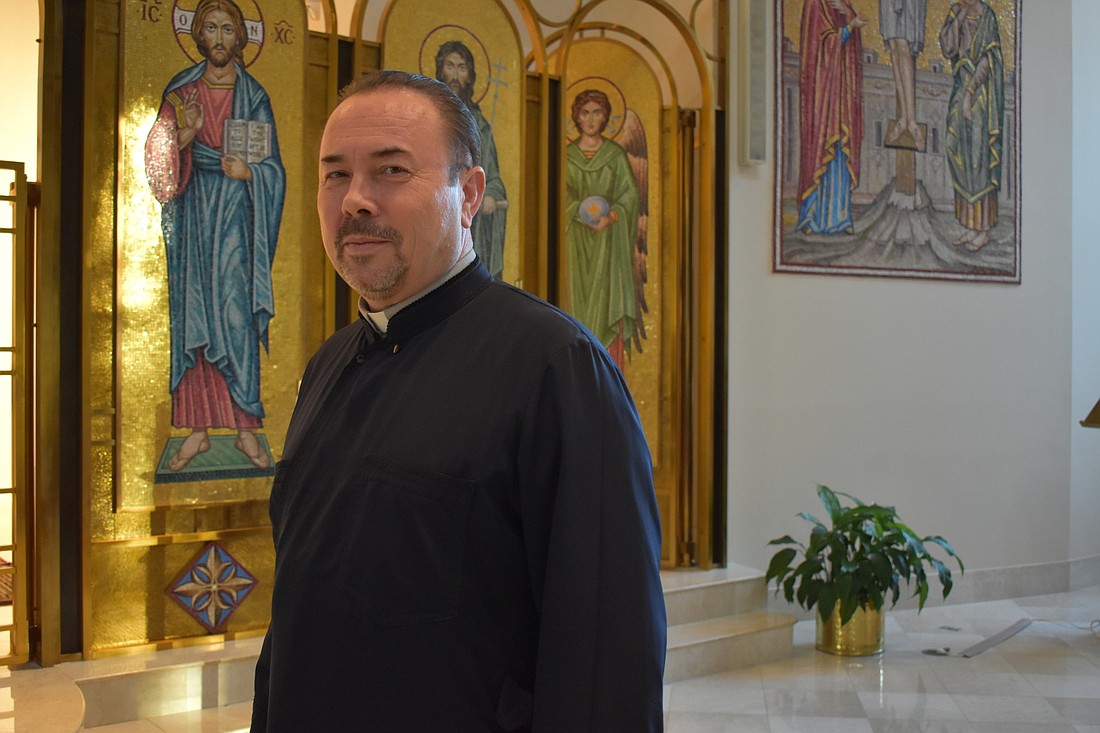- July 26, 2024
-
-
Loading

Loading

When St. Barbara Greek Orthodox Church held its first Greek Festival in 1984, the celebration had yet to draw the thousands it does today.
The church congregation was only a handful of families who worshipped in a community center, but the festival proceeds went toward a big dream — the fellowship hall that stands today, built in the style of the churches of the Byzantine Empire.
As Paulene Soublis, a church patriarch and member of 30 years recalled, “There was a lot of pushback then. Why are we building such a large church?”
Nonetheless, Father Frank Kirlangitis, the first full-time priest of St. Barbara, inspired people to look to the future.
“Build it and they will come,” Paulene quipped.
People did come. The congregation grew, as did the festival crowds, but one thing that hasn’t changed is the members’ love of showing off the church. That passion will be on display again Feb. 18-20 during the 38th annual Greek Festival at St. Barbara Greek Orthodox Church.
Father John Bociu said the church building has something to offer the region's art scene. While noting the beauty and religious inspiration of displays at the Ringling Museum, he said the region has few places to view Byzantine-style art.
“We are the Byzantine church here in Sarasota,” he said. “If somebody wants to be in touch with that kind of art, they visit St. Barbara to understand what it’s about.”
The Greek Orthodox tradition of decorating churches traces its roots back to the Great Schism of 1054, when rising tensions split the European Christian Church into the Western Roman Catholic Church and the Eastern Orthodox Church in Constantinople, a formerly Greek city which had become the capitol of the Byzantine, or Eastern Roman, Empire. Byzantine artwork is defined by its expressive religious mosaics.
However, for Greek Orthodox believers, artwork is more than a decoration, but also an integral part of religious experiences.
“We pray with icons, we venerate them, we kiss them, since they represent somebody that we love,” Bociu said, “We step in the church and we feel that they are family members, because we are a part of the kingdom of God, all of us.”
The initial artwork, a series of mosaics centered on the church altar, was installed in 1994 by Sirio Tonelli, and the display was later expanded through handmade oil paintings by George Filippakis which cover the walls, choir loft, and ceiling dome.
The mosaics follow the same layout as those of Greek Orthodox churches around the world, featuring panels of six saints with the church’s patron saint — in this case St. Barbara — on the left. Arcing above these on the wall are icons of Jesus and his apostles.
The oil paintings, viewed from left to right around the room, tell the story of Christ through the stages of annunciation, birth, baptism, crucifixion, ascension, and Pentecost.
Made with close attention to detail, the artwork showcases symbolism found in Byzantine art.
“If you look at the icons, they don’t have a blue background," Bociu said. "They have a gold leaf. Because they reproduce a different reality. They speak about the kingdom of God.”
The artwork also represents Christ as clothed in blue robes, with red robes underneath, while the Virgin Mary is represented with the reverse — red robes, and blue robes underneath. Bociu said this is due to blue symbolizing the heavenly realms and red symbolizing humanity.
Visitors to the Greek Festival can discover further details of the church artwork if they choose to tour the fellowship hall, but the festival itself is also an exposition of culture by the predominantly Greek congregation. When the festival arrives, large tents go up across the property to offer food, entertainment, and more.
“It is very important that the Hellenistic, the Greek, culture be showcased,” Bociu said. “It is not only getting money for the church, but also a good opportunity to give residents in the (region) the chance to taste Greek food. The vast majority that we offer to the visitors is prepared here in our kitchen, on our property. Also, the Greek culture is expressed through dances. The dances are representative of different parts of Greece.”